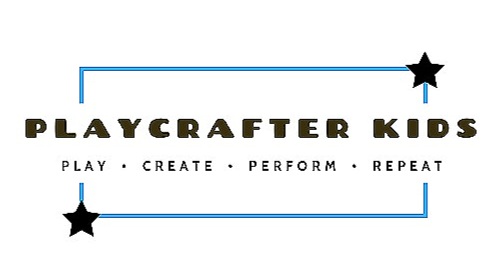Beyond Words: Crafting a Read-Aloud Experience that is Language Rich and Super Fun
Beyond Words: Crafting a Read-Aloud Experience that is Language Rich and Super Fun, Jessica ‘Jecca’ McGuire MS, CCC-SLP
As parents, many of us know that reading books to our kids is important, but not much guidance is given on exactly how to read books to them. And what if they get up and walk away before the book is over or don’t seem interested in books at all? Luckily for me, my education and career path helped me in knowing such things (which provides a pocket of confidence I feel as I navigate the ever-changing and often challenging waters of parenthood with my own preschooler… you know how it goes). Yet, if reading to our child is so important, then knowing how to go about doing so seems like something every parent should know about. The purpose of this blog post is to share tips on how to make story time with your child extra fun and maximize the learning that occurs.
Okay, so the overarching goal of reading to your child is *cue the cajon drum roll, please* having FUN and building CONNECTION. These are the foundational pieces to getting our children in a place where their brains can feel open to learning. We learn better when we feel safe and are having fun.
Of course getting books that speak to your child’s areas of interest (cats, airplanes, mud, what have you) will draw them in. However, with an engaging reader even the most boring book can become interesting.
Tap into your inner actor!
Be expressive while you read. This offers your child a rich model of emotional expression, intonation and overall listening comprehension. Use gestures to help provide meaning to new words (e.g., arms come wide when reading the word “gigantic”). Be expressive with your voice. Use an angry-clench-your-teeth voice when the character is mad or a quivering, small voice when the character is scared, and raise those eyebrows high and with a wide-opened mouth when expressing feeling “surprised.” This modeling will expand on teaching emotion vocabulary, which is an important tool to help your child learn how to recognize emotions in themselves and others.
Using different voices for characters will keep your child’s attention and make them look at you with that you’re-silly-and-I-love-it face.
Incorporate a sing-song voice, or melodic intonation, to increase their engagement and make the language/words more predictable. Repetitive books are great for this! A book that is repetitive, such as “Brown Bear, Brown Bear, What Do You See?” will naturally encourage a sing-song voice. Doing so makes it easier for us to leave off the last word in the phrase and gives our child an opportunity to participate and fill in the missing word (e.g., Brown bear, brown bear, what do you see? I see a red bird looking at ___).
Tap into your inner teacher!
You are your child’s first and on-going teacher. They are lucky to have you, and there are a few pointers that can make your guidance, when it comes to story time, more effective.
Be realistic with your child’s attention span. It’s okay not to read all the words on the page. In fact, when our kids are little and their attention spans are reduced, we probably shouldn’t be reading all the text on the page, especially with wordy books. This is one reason why I love Mo Willem’s Elephant and Piggie series- limited words and simple pictures that are easy to understand. Preschoolers can attend to a book for about 6-10 minutes. Remember, our goal is to make reading fun - not to bore them. It’s also good to teach that we finish the activities/books we start (which guides increasing attention span more than hopping from one thing to the next). Looking at the pictures and narrating what is happening or just reading the key words off of the page is great! Let’s not feel the need to read all the words on every page and just hit on the main points by using the pictures as a guide.
Focus on key vocabulary that relate to the specific story and have your child repeat them. If it’s a word that is new to your child, provide them with a synonym or quick definition to give clarity, but not take much time away from the book.
And lastly, engage and involve your child into the story by inviting them to turn the pages, giving direct and positive feedback and by asking story comprehension questions. As our children get older and the books have more of a storyline (unlike our buddy Brown Bear and all his colorful homies), you will find that most stories have a similar pattern. You can use these questions below, which come from an evidence-based literacy program known as Story Champs, to increase your child’s story comprehension and story retell abilities.
Who are the characters in the story?
Where did the story take place?
What was the problem in the story?
What did they do to fix the problem?
What happened at the end of the story?
How did they feel at the end of the story?
We already knew that reading is important. Now we know more about how to read to them best. If there is just one piece that is taken away, let it be this: We learn best when we’re having fun. So just focus on the fun and the rest will come :).
